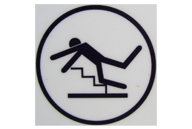October 26, 2015
Like Monty Python's parrot, we have not been dead, just sleeping. The press of two massive appeals in the 8th and 11th Circuits have kept us away from you, together with a bit of vacation and just goofing off. Well, it ends, for now, here.
You would expect us to write about baseball as the days grow short and under normal circumstances, you would not be mistaken. After all, everyone from The New Yorker to Women's Wear Daily has found some metaphor to hang their hat on in this Met-crazed world of autumn leaves and we would be dishonest if we didn't admit to enjoying days without mention of the Yankees. But for us, fall is not about beginnings; it is about endings.
We came to know Joan Leslie when we were 12. She, of course, was much older, having come to the attention of Hollywood in 1936. But the thing about Joan was that, well, its seemed that we all knew her. She was just so . . . American. "The girl next door" was surely a hackn- eyed phrase in the 1940's, but Joan was just that. Not so beautiful that she couldn't really live right down the block; not so ordinary that you'd ever forget her face. While she worked with Bogart in High Sierra, Cooper in Sergeant York, and Cagney in Yankee Doodle Dandy, it was 1944's Hollywood Canteen that hooked us for life.
Joan played herself (as all the stars did in the film,) with one important difference: She falls in love with an average G.I., which is both the plot of the film and the essence of Joan Leslie's gift.

A friend of ours, upon seeing Hollywood Canteen years later, turned to us and said: "Now that's a girl worth fighting a war over." Not Grable's legs; not Hayworth's hair; not Russell's "assets." A man would risk his very life for Joan Leslie's love. You must remember this . . . .
In the wonderful world of leaving bad enough alone, we introduce you to Hutchinson v. Sheridan Hill House Corp., Slip Ops. 144-146 (Oct. 20, 2015) from the Court of Appeals. If you loved the clarity of Trincere in its masterful handling of the law of trivial defects, you're just going to love Sheridan.
The introductory paragraph to Sheridan sets the tone: "These cases teach that it is usually more difficult to define what is trivial than what is significant. The common factual and procedural thread among the three appeals before us is that an individual tripped on a defect in a sidewalk or stairway, and was injured, but was foreclosed from going to trial on the ground that the defect was characterized as too trivial to be actionable." Wow! What a revelation. Who woulda' thunk?
The professed innocence of Sheridan is what's disturbing, the Court seeming to have no concept of the havoc wreaked on Trincere under the pummeling of the AppDivs, determined to eviscerate its meaning. Sharp-eyed readers will point us to portions of Sheridan which seem to do just that, but we reject the easy